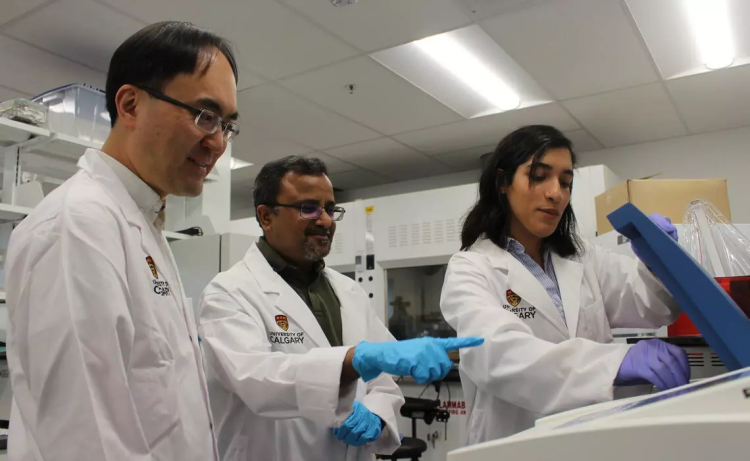To you, it might just look like leftovers from your morning cup of joe.
But a University of Calgary researcher says this staple of many morning routines is helping track toxins in drinking water.
Dr. Seonghwan (Sam) Kim, PhD, has developed a new way to detect trace amounts of hexavalent chromium ions (Cr6+) using coffee grounds.
The ions are highly toxic carcinogens that can be found in water near industrial facilities used for steel production, metal coating, dyeing, leather tanning, and petroleum catalyst production.
It's also been identified as a cause for neurological disorders, organ damage and infertility.
Kim says Cr6+ concentrations in water vary significantly depending on local conditions like proximity to steel plants and refineries, presence of natural organic matter or minerals in the water and soil, and waterway's flow conditions.
While it isn't naturally widespread in most regions of Alberta or Canada, it can occur locally due to specific industrial activities. It's more often found in China, India, the United States, parts of Africa and Latin America.
Coffee waste ideal for carbon quantum dots
Coffee waste seemed like a perfect option for developing a test to track Cr6+, says Kim, a professor in the Department of Mechanical and Manufacturing Engineering and Canada Research Chair in Nano Sensing Systems.
"Coffee is rich in carbon and contains chemical groups such as chlorogenic and amino acids, many of which remain in coffee grounds," Phani explains. These elements can be helpful in identifying Cr6+.

Kim, Phani and Zandi see potential for their technology to be refined and used for mobile water safety testing. Photo Credit: Joe McFarland
Along with Dr. Arindam Phani, PhD, and PhD student Pegah Zandi, Kim developed a method to use the coffee waste to manufacture carbon quantum dots, which are nanoscale carbon particles with a number of purposes, including fluorescence. They then synthesized a final product: graphitic carbon nitride sheets decorated with the carbon quantum dots.
Phani says the resulting material behaves like a fluorescent highlighter, becoming visibly darker when exposed to Cr6+ in water, even at very low concentrations.
Tech has potential for mobile water screening
While it's one thing to detect the amount of Cr6+ in water, it's another to take it out of the water supply.
Kim says the ions can be adsorbed - or held as a thin film on the outside surface of the water - and be reduced to a less-harmful version, Cr3+.
Adds Zandi: "Interestingly, our highly selective sensor allows us to monitor this reduction process effectively, as it can distinguish between Cr6+ and Cr3+ with high specificity."
The next phase of the team's research will be to look at how much adsorption and conversion happens through their process.
"By further refining the sensing protocol and developing a portable sensing system, this simple and facile method could be widely adopted and utilized for water safety screening in the field and even at supply stations," Kim says.
As for the research itself, he adds, "This is quite an excellent achievement since we demonstrated that this simple sensing method could detect hexavalent chromium ions at a concentration that meets the World Health Organization's recommended standard."
The team has filed a provisional patent application with Innovate Calgary and will be considering the launch of a start-up company for commercialization.
Kim says his team's findings, Detecting Cr6+ at 100 pM Concentration with Fluorescence Enhancement Signatures in a Novel Eco-Fluorophore: Matching WHO's 96 pM Recommended Standard for Drinking Water recently published in Advanced Materials, could go a long way in providing safer drinking water for many communities around the world.












